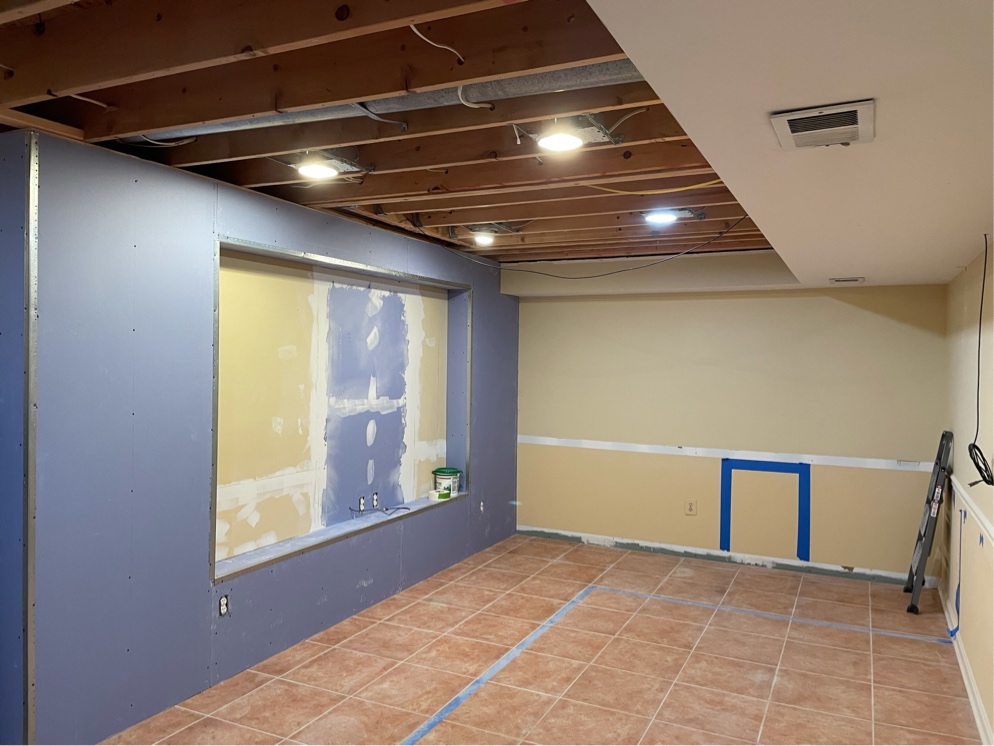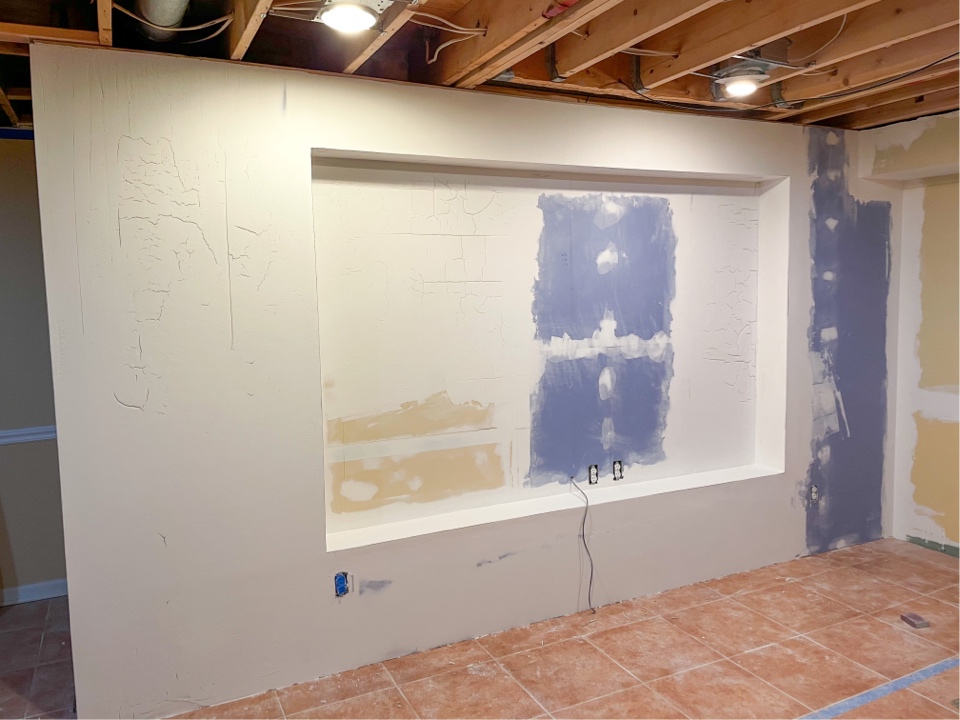I framed a new wall over an existing wall to get a nice, rectangular recessed area for a projector screen in my basement. Here’s the wall prior to spackling:
The old wall (back wall of recessed area) is extremely bowed, and so I read that I could use a drywall darby (and a lot of mud) to level it out. While I used powdered setting type mud on all my taped joints, I wound up using pre-mixed all purpose joint compound for leveling, mostly out of convenience. I realized that this would result in some cracking, and it certainly did. It’s also taking a really long time to dry, but I’ve got time.
While I believe/hope that the cracking will be fixed with lots of iterations of sanding/spackling, I’m more concerned with the left-most wall (pictured below), as I got a bit carried away with the drywall darby and obsessed over a quarter-inch gap in-between the left and the right vertical corner beads (I likely built them up too much).
In retrospect, I feel as though I should have just installed quarter-inch pieces of drywall and feathered them in.
Questions:
- Should I continue down my current path and with spackling/sanding until everything is nice and smooth? Or should I try and remove all of that dried mud somehow, at least on the left wall? I’d really like to avoid taking down any drywall panels at this point.
- Do I need to prime the wall with anything different than the standard, run of the mill paint primer considering all of the joint compound? I know that skimming with thin layers can provide a really smooth finish, so I’m hoping that’s still the case with thicker coats. For the sake of same texture everywhere, I’ve tried skimming the top and bottom pieces, as well as the inside frame pieces...
Try not to judge me too hard, and I’d appreciate any help!


